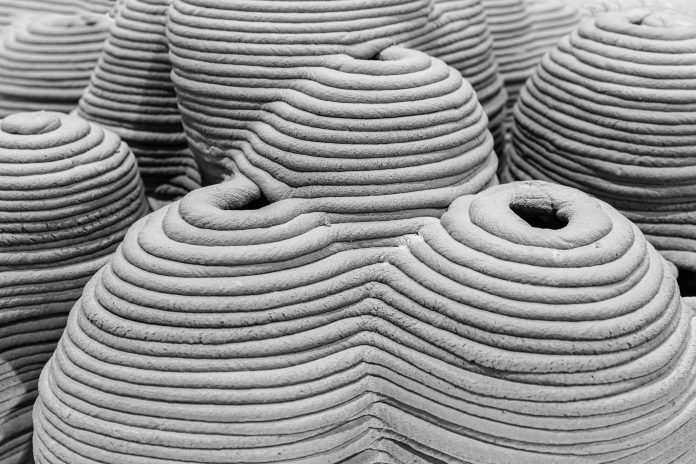A UK first 3D concrete printing innovation by BAM in Glasgow has created the path to a more productive future across the construction industry
BAM, working on behalf of Glasgow City Council, has installed 3D concrete printed (3DCP) infrastructure for the first time in Scotland. The two 3D concrete printed staircases we installed while delivering the new M8 Footbridge are also the largest use of 3D concrete printing (3DCP) in the UK. This novel construction technology isn’t a gimmick; it has a firm position in the future of construction, with good reason.
Using 3DCP saves around 40% of materials, depending on the size and geometry of the structure. Building offsite is safer, quicker and has greater surety of good quality. Potential impact on construction works due to the weather is lessened, giving greater confidence in delivering the project on time.
3D concrete printing produces efficient, precise and intricate structures
When it comes to the concrete printing process, it avoids the need for formwork, which is also a waste from the traditional in-situ construction method. It enables the creation of highly efficient, precise and intricate structures, which are difficult to create using traditional methods.
BAM’s history with 3DCP goes back to 2017 when we began working with 3D printed concrete as part of a research consortium alongside the Technical University Eindhoven and the team delivered the world’s first printed bridge.
In 2019, we raised our sights. Working with our partner Saint-Gobain Weber Beamix, we shifted printing tasks from the university campus to a commercial factory, which we still use now.
The technology is relatively new, so while we currently utilise the Saint-Gobain Weber Beamix factory in the Netherlands, our ambition is to establish a facility in the UK as the technique becomes standard practice.
Looking at the issues facing our industry, two issues standing out are its carbon footprint and the shortage of skills. 3D has the potential to address both. The digitally enabled design and delivery removes waste and ensures we get it right first time, while the factory setting provides certainty on product quality and reduces on-site tasks – with added health and safety benefits.
How does 3DCP work?
The printer uses 3D geometric designs to make elements that can be combined into structures such as bridges, retaining walls, drainage outfalls, street furniture and even skate ramps.
The optimised design is printed using a mortar, delivered through a nozzle at the end of a hose attached to the printer. The material originates as a powder in the storage silo and is mixed with water in the pump mixer. The arm delivers layer upon layer of mortar to build up the three-dimensional structure.
The printer uses a unique mortar mix, which has thixotropic properties and remains acting as a fluid until it stops moving. Once deposited, it partially solidifies until the subsequent layer introduces energy, bonding both layers together to form the structure. Each layer must be laid within 10 minutes of each other. This means it is as strong as more conventional cast in-situ concrete elements and has similar durability performance.
Is 3DCP the future?
In part, yes. The technology goes some way to solve issues that have plagued traditional construction for years. We’re beginning to use the technique on more elements of our projects. So far, we’ve focused on bridges and their surroundings but there’s no reason we can’t concrete print many different components of the infrastructure we deliver.
The technology provides freedom to the designer, reduces waste and carbon, reduces the impact of external factors like the weather and makes work for our people safer and more efficient.
We’ve made advancements in all these areas in other ways, but this technology is all encompassing.
For clients, concrete printing can be quicker, save costs and provide greater assurances in quality with rework avoided. To create maximum benefit, however, the process needs to be considered from the outset during the planning and design stages to realise the rewards that 3DCP can offer.
It’s a great example of successful innovation that will keep growing as the industry embraces new ways of working that benefit us all.
Colin Evison
Head of innovation
Tel: +44 (0)1442 238300




![[Video] Fireco: 80 new fire doors required for residential flats in London](https://www.pbctoday.co.uk/news/wp-content/uploads/2025/04/2024-06-01-Lords-view-one_1200x750_004-218x150.webp)









